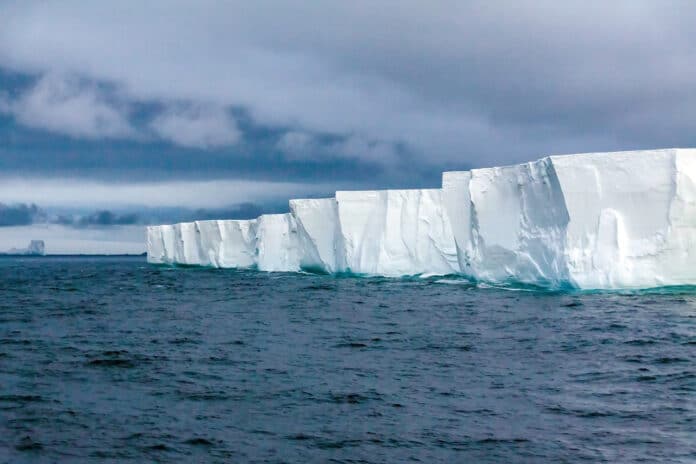Massive A81 iceberg is approximately the size of Greater London- measuring 1550 km2. It calved from the Brunt Ice Shelf on the 22nd of January 2023 and has traveled approximately 150km south following the coastline.
As the summer team departed the nearby British Antarctic Survey (BAS) Halley Research Station, they witnessed from the air the start of the iceberg’s journey into the Weddell Sea. Recently, the team released a video showing the enormous scale of the hefty berg, which looks like its own ice sheet and is birthing tiny icebergs along its coastline.
The first footage of the massive A81 iceberg shows the dynamic nature of the iceberg surrounded by smaller icebergs that also broke away.
A81 became free when Chasm-1, a huge ice crack, across the whole ice shelf. It is currently drifting 150 kilometers from its starting point. The BAS Halley Research Station is located on the Brunt Ice Shelf, one of the globe’s most meticulously observed ice shelves. The area around the research station is currently primarily undisturbed by the calving episode, according to monitoring by BAS glaciologists. The calving of A81, the second major iceberg from the region in the past two years, is a natural occurrence along the Antarctic coastline.
After breaking from the ice shelf, the iceberg has spun around and is heading south. A81 is anticipated to travel westward in the same manner as earlier icebergs swept by the powerful Antarctic Coastal Current. As A81 keeps moving through the Weddell Sea and farther north towards the South Atlantic basin, BAS scientists and the general public will continue to track and monitor it.
Glaciologist Dr. Oliver Marsh studies the Brunt Ice Shelf and has just returned from Halley Research Station. He says:
“This was a calving we knew was coming. BAS has been monitoring the Brunt Ice Shelf and the chasms formed across it for over a decade. Since glaciologists first observed Chasm-1 widening in 2012, BAS science and operations teams have anticipated the calving event. High precision GPS instruments and satellite data have been used to monitor the widening of the chasm, and in 2016 BAS took the precaution of moving the Halley Research Station inland to protect it.”
Professor Geraint Tarling, head of the Ecosystems team at BAS, was on board. He says:
“An iceberg of this size will have a big impact on the ocean ecosystems which support the rich diversity of marine wildlife found in this Antarctic region. These impacts may be both positive and negative. On the positive side, as the iceberg melts, it will release a lot of nutrients that could benefit the growth of microscopic plants, such as phytoplankton at the base of the oceanic food webs. The negative side is that this same melting, at such a large scale, dumps lots of freshwater into the ocean, which decreases salinity levels and makes the waters unsuitable for many phytoplankton and the zooplankton that feed on them. These effects could then cascade the food web to fish, birds, seals, and whales.”
